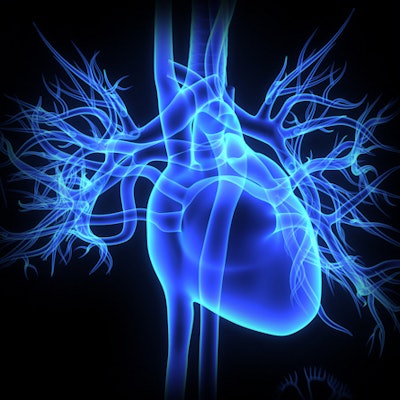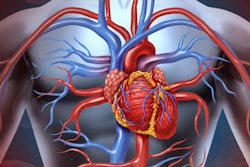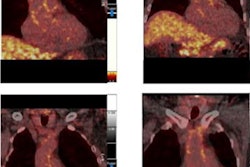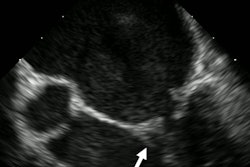
Ultrasound imaging of the carotid arteries can help identify patients with psoriasis and psoriatic arthritis who are at increased risk for heart disease by revealing the extent of clogging in patients' arteries, according to a new study published online June 5 in Arthritis & Rheumatology.
The results show that combining ultrasound imaging data with traditional cardiovascular risk factors -- as measured by, for example, the Framingham risk score -- could identify which patients with psoriatic disease may benefit from more intensive heart-protective therapies, wrote lead author Dr. Curtis Sobchak, of the University of Toronto, and colleagues.
"Ultrasound is widely used in rheumatology settings as a point of care to detect joint inflammation. Our study suggests that ultrasound can also be used to identify patients that are at high cardiovascular risk who may be missed by the conventional methods such as the Framingham risk score," senior author Dr. Lihi Eder, PhD, said in a statement released by the journal. "This will allow early intervention, such as initiation of lipid lowering therapy, which will ultimately lower the risk of developing cardiovascular events."
Sobchack and colleagues evaluated whether carotid ultrasound could predict incident cardiovascular events in patients with psoriatic disease and whether using ultrasound imaging data would improve the performance of the Framingham risk score for cardiovascular risk prediction.
The study included 559 patients with psoriatic disease. Of these, 23 had experienced cardiovascular events that suggested heart disease. Patients underwent ultrasound of the carotid arteries between December 2009 and December 2015; the researchers then assessed the extent of atherosclerosis by measuring carotid intima media thickness and total plaque area, evaluating the patients' risk of experiencing further cardiovascular events using a hazard ratio (HR) model (with base HR equal to 1).
The team found that the rate at which patients experienced their first cardiovascular event during the study period was 1.11 events per 100 patient years. The group also found the following factors predicted incident cardiovascular events after controlling for the Framingham risk score:
| Factors on carotid ultrasound that predict cardiovascular events | |
| Hazard ratio | |
| Total plaque area | 3.74 |
| High total plaque area category | 3.25 |
| Mean carotid intima media thickness | 1.21 |
| Max carotid intima media thickness | 1.11 |
Since carotid atherosclerosis is associated with an increased risk of developing future heart disease -- and since patients with psoriatic disease are known to be at increased risk of heart disease -- using ultrasound-generated vascular imaging data with information on traditional cardiovascular risk factors could improve the accuracy of cardiovascular risk assessment in these patients, according to the group. And ultrasound has many benefits when compared with other imaging modalities.
"The advantage of ultrasound over other modalities for vascular imaging includes lack of radiation, low cost of the examination, and its widespread use in rheumatology for joint evaluation," the team concluded. "Thus, this assessment could potentially be performed 'at the bedside' during consultation to provide immediate valuable information to complement clinical data from history, physical examination, and laboratory data."




















